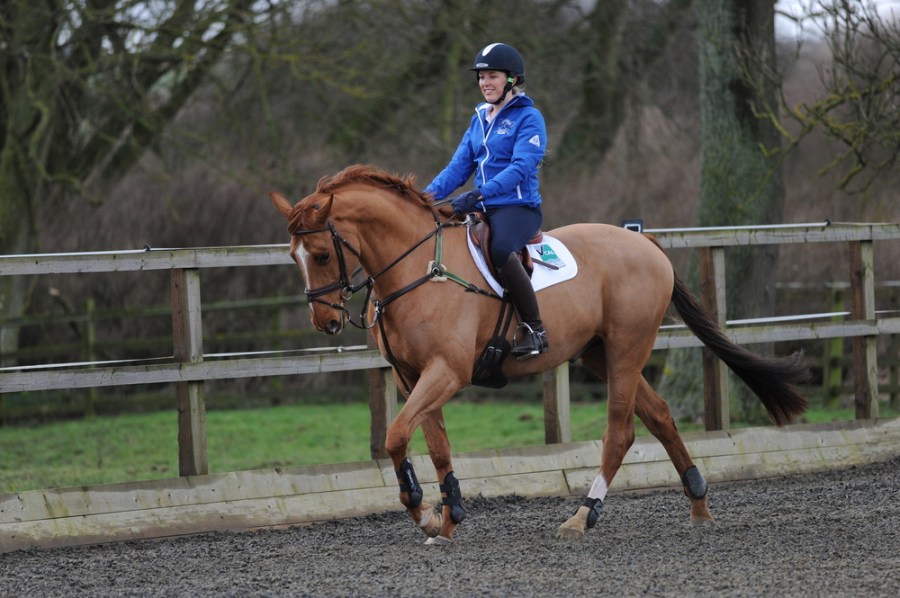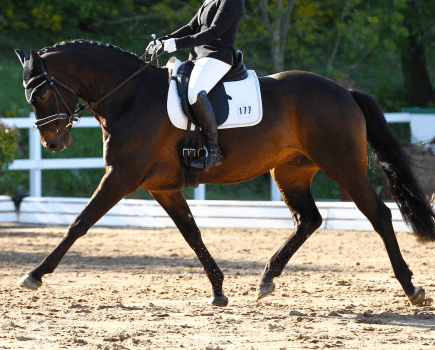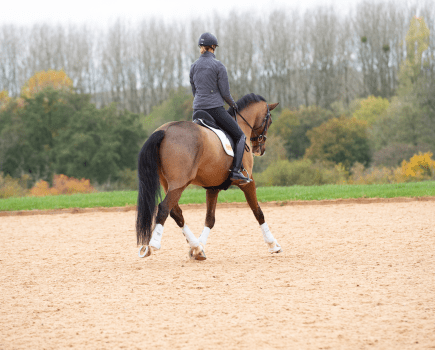A good walk is the foundation of any horse’s training, whatever discipline you’re doing. Dressage pro Hannah Biggs helps you achieve the perfect walk in four easy steps.
1. Walk like a panther
This exercise helps develop a good stretching extended walk, with your horse taking the maximum length of stride while maintaining a light consistent contact – it’s also a good way to start any schooling session. You horse will be stretching forwards into a contact and using his back – imagine he’s walking like a panther, stalking through the jungle.
To ride it:
Aim for big long strides, marching but not hurried, rather than short quick strides and avoid nagging with your legs every stride – your horse needs walk forwards himself, using every part of his body. Move your hands backwards and forwards, swinging from your shoulders, so that you follow your horse’s head movement without restricting him. When you’ve got this powerful rhythm, imagine your reins are made of steel and they’re pushing your horse’s nose forwards with every stride.
2. Baby steps
Asking your horse to take baby steps in walk will help improve his collection and improve engagement. Before you start your horse needs to be in front of your leg and balanced, otherwise he’ll simply stiffen his body against you.
To ride it:
To ask for baby steps you need to sit still in the saddle, so you’re almost against the movement of the walk with your seat (the opposite of the extended walk where you’re swinging with your hips to follow the bigger strides) and this ‘stilling’ of your seat shortens the walk steps. Watch your horse doesn’t tip onto his forehand, tighten his back, swing his quarters or grind to a halt. He needs to keep stepping forwards in a rhythmic walk without you constantly asking with your legs. Ask for just a few baby steps to begin with and then ask him to walk forwards normally again. Your contact should remain light and consistent and it should feel like your horse’s shoulders are up in front of you, and that he’s picking his legs up quickly underneath him.
3. Think laterally
If you’re struggling to maintain the four-beat walk rhythm, lateral work can help. Riding shoulder-in down each long side of the arena is a good exercise to use, as it encourages a forward connection to the bridle, whilst encouraging your horse’s hind legs to step smartly under his body. Shoulder-in will also help with that all-important suppleness, as a stiff back is usually the cause of an irregular walk rhythm.
4. Poles apart
If your horse is unwilling to stretch forwards in his walk, using poles on the ground can help. Pole work also helps your horse maintain a balanced, rhythmic walk with plenty of energy and encourages him to use his hindquarters. It also adds some variety to your horse’s training session and can help him concentrate, as it keeps him thinking.
To ride it:
Set out three poles in a straight line 2ft 6in apart as a starting point, then you can gradually widen the distance between the poles to help improve the length of stride or shorten the distance to collect the stride.









